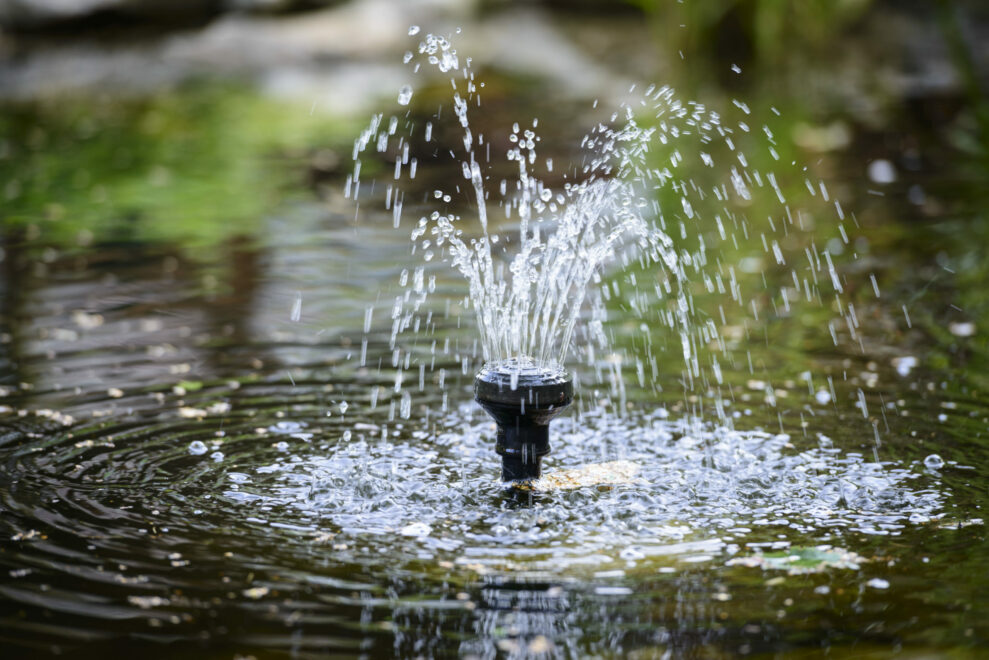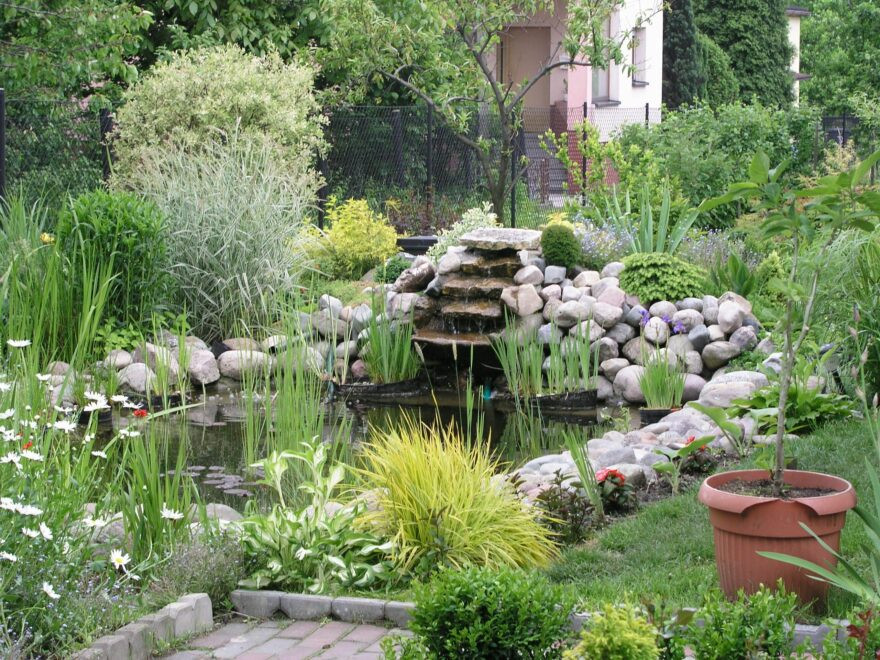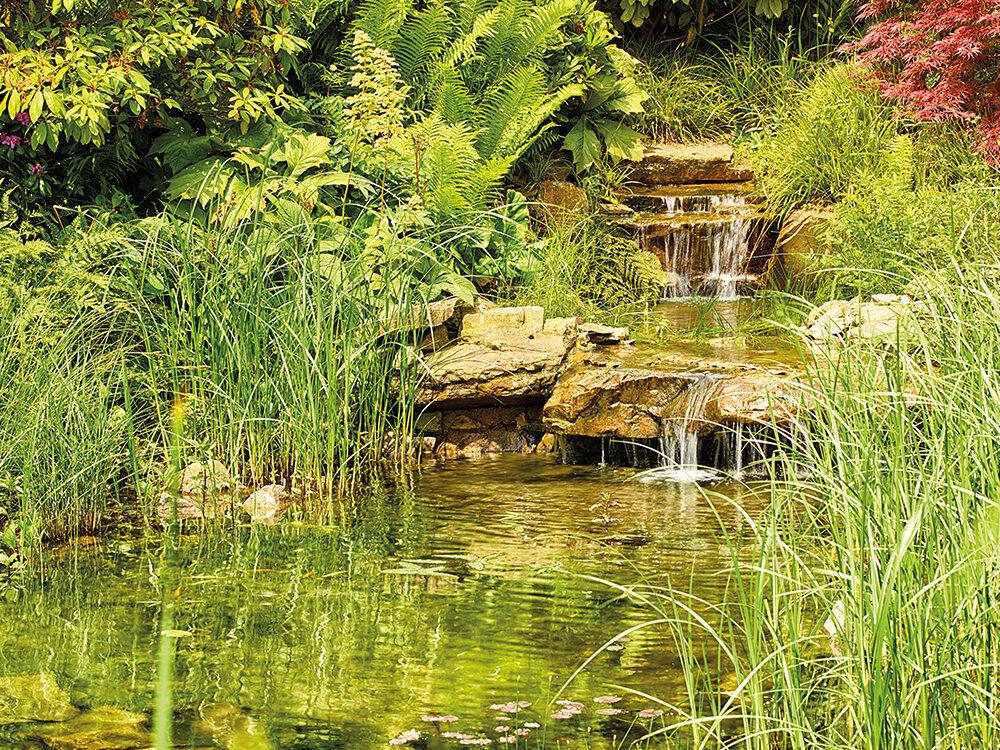How to select the right pond pump
Pond pump selection is a vital part of setting up a pond. Pumps can oxygenate the pond water, power pond filters or produce decorative fountains and waterfalls. But there is so much choice so which one is right for you? To start off with there are three main types of pond pumps - solids handling filter pumps, fountain pumps, and feature pumps.
Solids handling pumps have large cages and large inlet holes to suck in solid waste and pump it to the filter for removal. Fountain pumps have small cage holes to prevent the solid matter from being sucked in and blocking the tiny holes in the fountain jet. Solids handling pumps are low pressure and designed to lift large water volumes just a few feet to a filter box. Fountain pumps are high pressure to squirt water high into the air or send water to the top of a waterfall.
Feature pumps are compact to fit inside self-contained water features. Because of the need to be small, they have small inlet slots and small cages, meaning they're fine for water features but would quickly clog if used in a conventional pond with plants and fish.
So filter pumps won’t power fountains, and fountain pumps will power filters, but much of the dirt will stay in the pond. If you want a filtered pond with a fountain, unless it's a small pond where a combined unit will do it, (see below,) you’ll need two pumps.
- Fountain and waterfall - Fountain pump
- Filter and waterfall - Filter pump
- Water feature - Feature pump
- Filter only - Filter pump
- Filter and Fountain - Filter pump and Fountain pump
- Small pond - All-In-One pump
- Fountain, filter and waterfall - Two pumps

Pump size, pond turnover and flow rate
Conventional advice is to select a filter pump that will turn over the pond volume once every two hours. That means that for a 10000-litre pond you will require a 5000lph pump. Although most modern pump and filter packages, (especially pressurised pond filters,) aim to turn the total pond volume over once per hour if it contains fish. So if you have a 2000 litre pond, you need at least a 2000lph pump in order to have a healthy pond.
To select a fountain pump all you need to know is how high you want it to pump water (its max head height,) or the height of the three-tier fountain you want it to produce. For waterfalls, you need a pump of about 4000lph to cover a 12” lip with water, after head loss.
A pump that is too large may spray a fountain outside the catchment of the pond, losing water, or may cause it to splash outside of a watercourse. Pump flow can also be over that recommended for Ultra Violet Clarifiers which rely on contact time to zap algae and clear green water. Too fast and the contact time is not sufficient, and the pond may not clear.
Choose a pump that is too small and it may not be powerful enough to pump water to the height of a filter box or watercourse and may struggle to cope with the amount of physical waste in the pond and clog up. The pump is the beating heart of the pond so if it stops you lose filtration and the aeration that the moving water brought. And the loss of those two essentials can mean a disaster for ponds containing fish.
Small pond owners don’t have the luxury of two pumps or external filter boxes, so an all-in-one model that can filter, create a fountain and zap green water is the order of the day. Small and convenient, an all-in-one pump can provide clear water and make a small pond suitable for fish by breaking down waste.

Pump maintenance
Although filter pumps are largely maintenance-free, all pumps will require maintenance. Brush the pump cage with a coarse brush to remove leaves, blanketweed and algae. They will be the primary cause of flow reduction and blocking. If the pump has a strainer sponge inside the cage, remove it and squeeze it in a bucket of pond water until clean.
All pumps are powered by an impeller - a propeller-like item in the middle of the pump body. Unscrew the impeller housing to reveal the impeller and carefully pull it out. It will offer some resistance as it is held in by a magnet. Once out carefully clean the blades and impeller shaft. Replacement impellers are available for some models if damaged.
Be garden safe
Garden electricals should be installed by a qualified electrician. We recommend that all pond pumps are connected to a certified garden safe RCD circuit breaker.










Thanks
Billy